Is Gorgonzola the same as blue cheese? Or is there any difference between gorgonzola and blue cheese? We’re getting to the bottom of it, answering how each are made, how they taste, and when to use each of these funky cheeses!
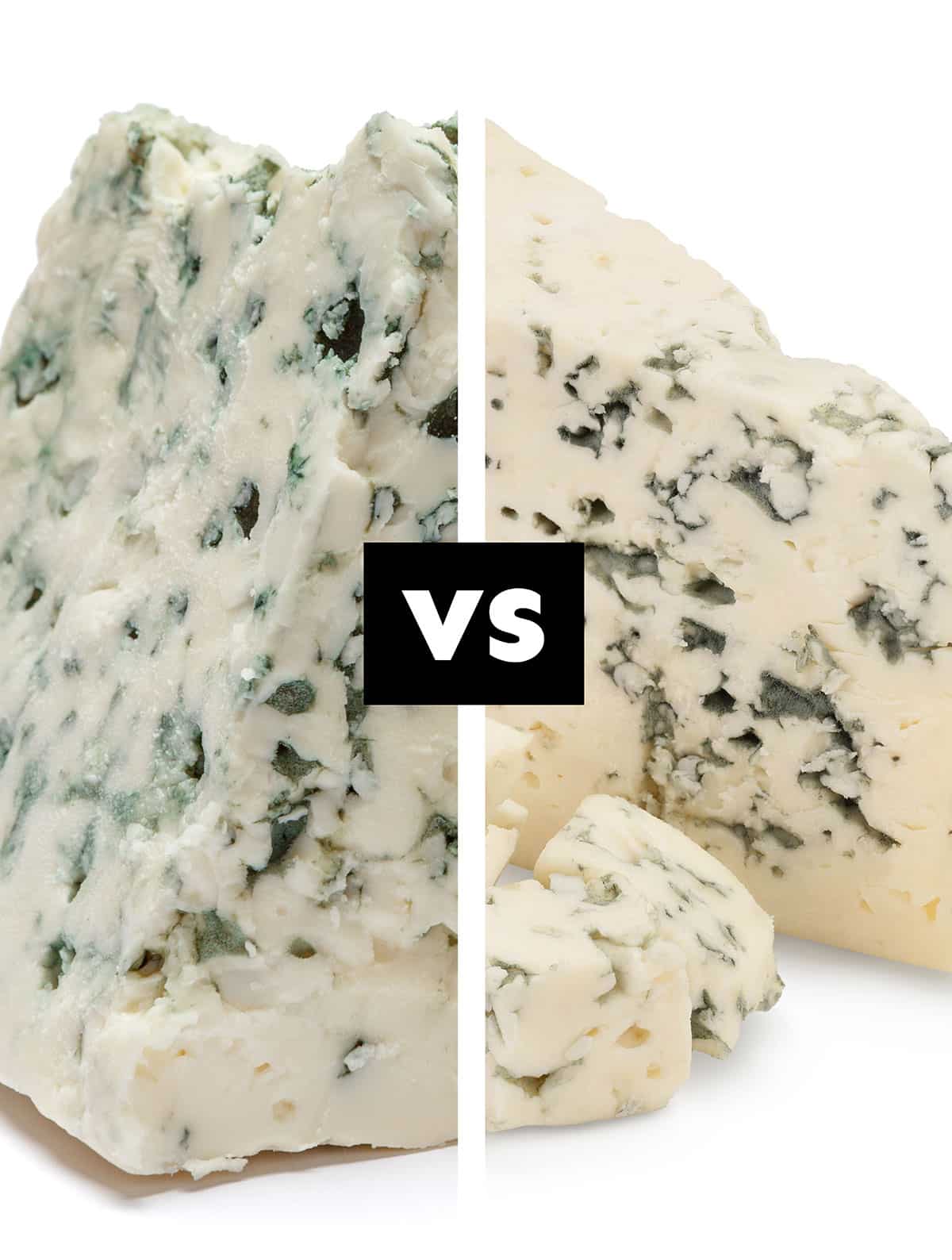
Gorgonzola Versus Blue Cheese
- Origins
- How They’re Made
- Appearance
- Flavor
- Uses
- Best Blue Cheese Food Pairings
- Best Blue Cheese Drink Pairings
- Substitutes for Gorgonzola
Origins
Blue Cheese: Blue Cheese is the name for a family of cheeses easily identifiable by their blue spots, and all made in a similar fashion.
The primary varieties are Roquefort (French), Gorgonzola (Italian), Cabrales (Spanish), Stilton (English), and Danish Blue (Danish). Roquefort is the strongest and Danish Blue the mildest.
Blue cheese origins can be traced back to various regions in Europe as you can see from each of these popular varieties. We just aren’t sure which of these was developed first. Roquefort, hails from France, and may have been the first as we know its history dates back over a thousand years.
Gorgonzola Cheese: Gorgonzola is a famous type of blue cheese that comes from Italy, specifically the Lombardy and Piedmont regions, where it is believed to have been produced for over a thousand years. The name “Gorgonzola” is derived from the town of Gorgonzola in Lombardy, where the cheese was first made.
Legend has it that Gorgonzola was discovered accidentally when a cheese maker left some cheese in a cave, allowing natural molds to develop. This serendipitous discovery led to the creation of one of the world’s most loved blue cheeses.
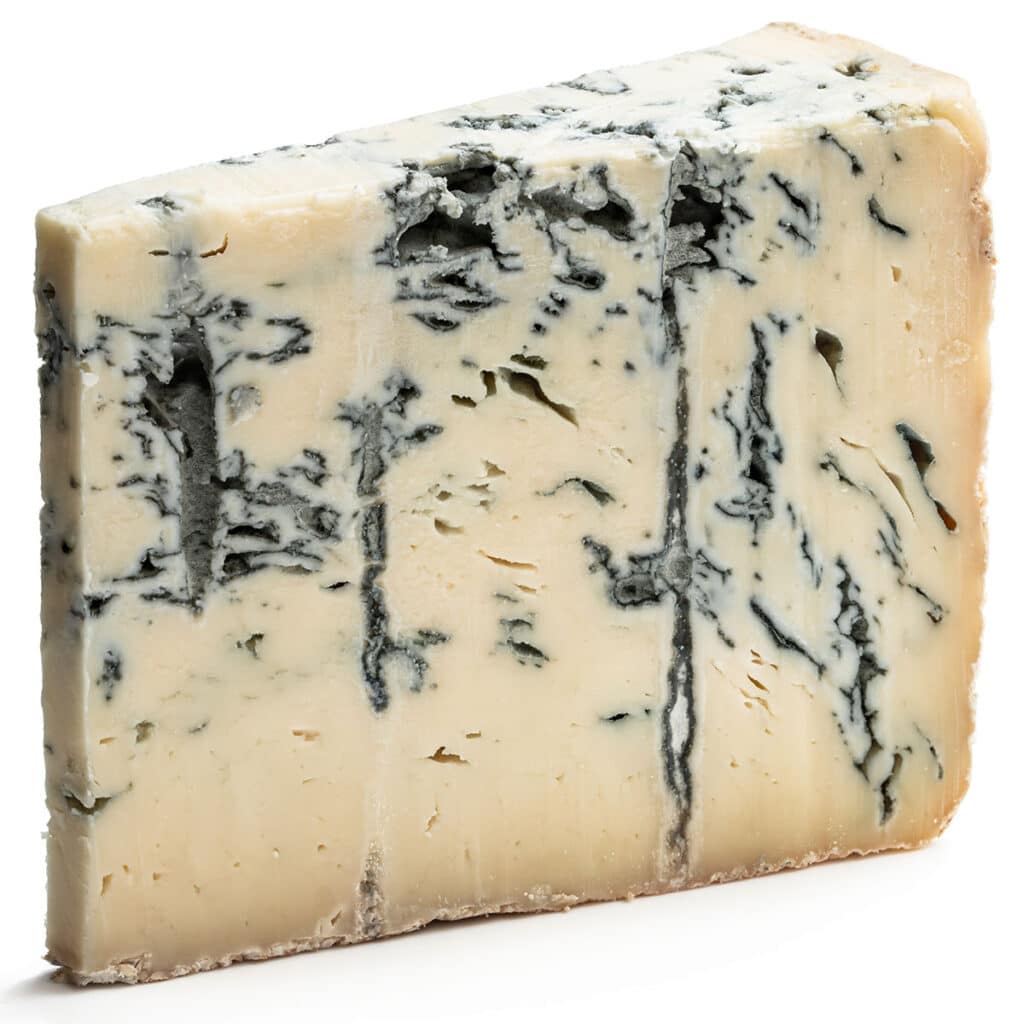
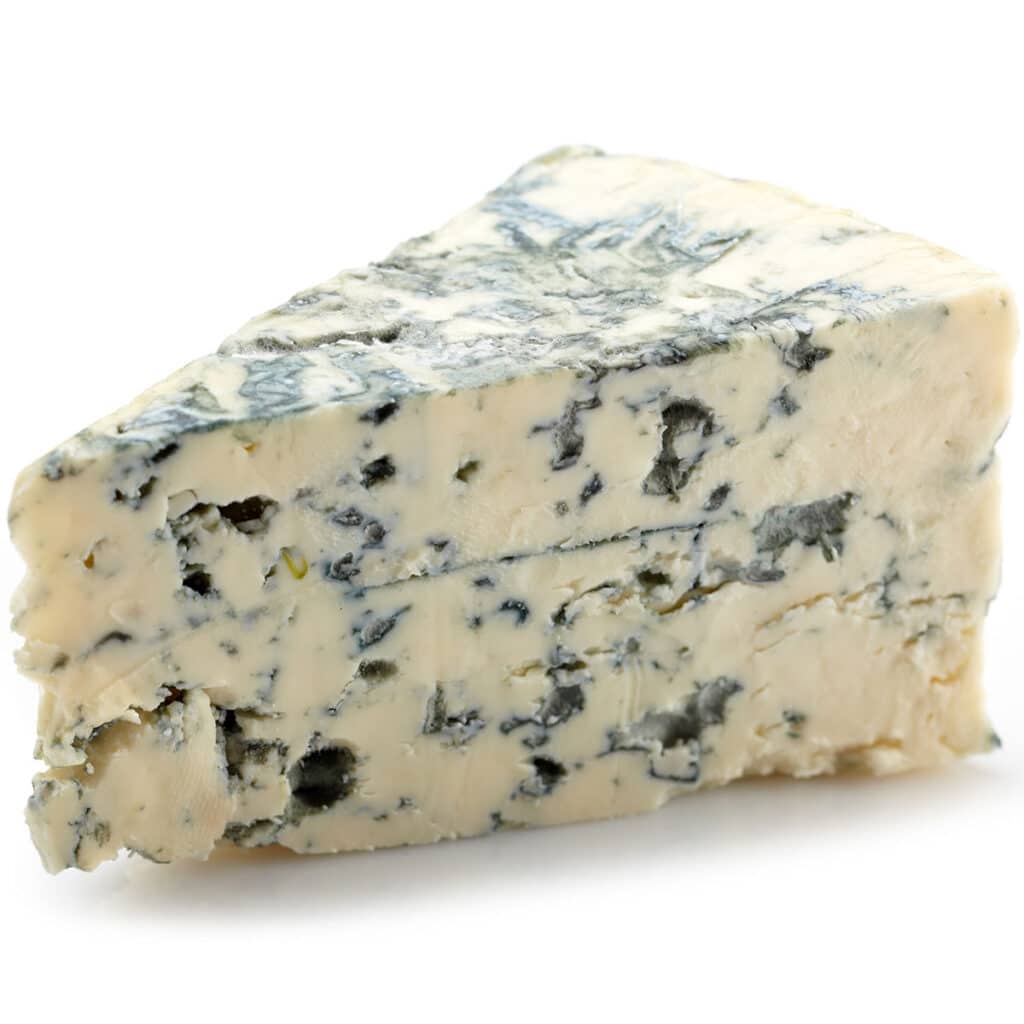
How They’re Made
Blue Cheese: The blue spots and veins are caused by the penicillium mold injected into the cheese during production. This mold reacts with the curds to give blue cheese varieties their spicy taste as well as color.
Blue cheese is made from cow, sheep, or goat milk which is curdled using rennet or other enzymes. After curdling, the curds are cut into small pieces and then drained to separate the liquid whey from the solids. The curds are then typically salted and molded into the desired shape.
What sets blue cheese apart is the introduction of mold spores, usually penicillium roqueforti or penicillium glaucum (not the penicillin used in medicine). These molds are added during the cheese’s production, either by piercing the cheese with needles or by mixing mold cultures into the curd. Over time, the cheese is left to ripen in a cool, humid environment, allowing the mold to grow and develop the distinctive blue veins.
Gorgonzola Cheese: Unlike other blue cheeses, gorgonzola is made only from cow’s milk, primarily from the breeds of Piedmontese cattle. The cheese-making process involves pasteurization, curdling the milk with rennet, and then draining and separating the curds and whey.
Like other blue cheese varieties, the addition of penicillium mold spores during the cheese-making process provides the distinct appearance and taste. Metal rods are inserted into the cheese to create channels for air that carry the mold throughout the cheese giving it the distinctive blue veins or marbling found in gorgonzola.
After shaping and salting, Gorgonzola is left to mature in controlled environments, typically aging for two to four months or longer. Younger gorgonzola is creamier and milder, while aged gorgonzola becomes sharper, saltier, and firmer as the moisture content decreases.
Appearance
Blue Cheese: The appearance of each blue cheese variety can vary, but it is most commonly characterized by its creamy white interior with striking blue-green veins running throughout. The cheese’s texture can range from soft and crumbly to semi-soft and creamy, depending on the specific variety and its aging process. The exterior of blue cheese is often coated with a protective layer, which may be edible or inedible, depending on the cheese type.
Gorgonzola Cheese: Gorgonzola comes in two main varieties:
- Gorgonzola Dolce (sweet and creamy)
- Gorgonzola Piccante (sharp and crumbly).
Both varieties feature a pale ivory to pale yellow interior with distinctive blue-green veins throughout. The texture of Gorgonzola Dolce is soft and creamy, while Gorgonzola Piccante has a firmer, crumbly texture. Texture, however, also depends upon how long the cheese is aged. It will start more toward creamy and age to a range of soft to semi-firm and crumbly. The rind is often a thin layer that may be edible or removed, depending on personal preference
Flavor
Blue Cheese: What does blue cheese taste like? Well that is complicated. All varieties are renowned for their bold and intense flavors. Roquefort is the strongest and Danish Blue the mildest. Stilton and Gorgonzola fall between these two extremes.
All blue cheese varieties have a tangy, salty, and earthy taste with a distinctive sharpness provided by the mold cultures. The blue veins within the cheese contribute to its unique flavor, delivering a slightly spicy and piquant quality. The aroma of blue cheese is equally potent, with a strong, pungent smell that can be off-putting to some but is loved by enthusiasts.
Gorgonzola Cheese: Gorgonzola is a relatively mild variant of blue cheese similar to Danish blue and quite a bit milder than roquefort. The flavor depends on the type. Gorgonzola dolce is mild and creamy, with a slightly sweet and buttery taste that balances the tanginess of the blue mold.
It has a pleasant aroma with hints of earthiness. Gorgonzola piccante, on the other hand, is stronger and sharper in taste. It boasts a more pronounced blue cheese flavor, often accompanied by spicy and tangy notes. The aroma of Gorgonzola piccante is robust and pungent due to the mold, and is a reflection of its bold flavor.
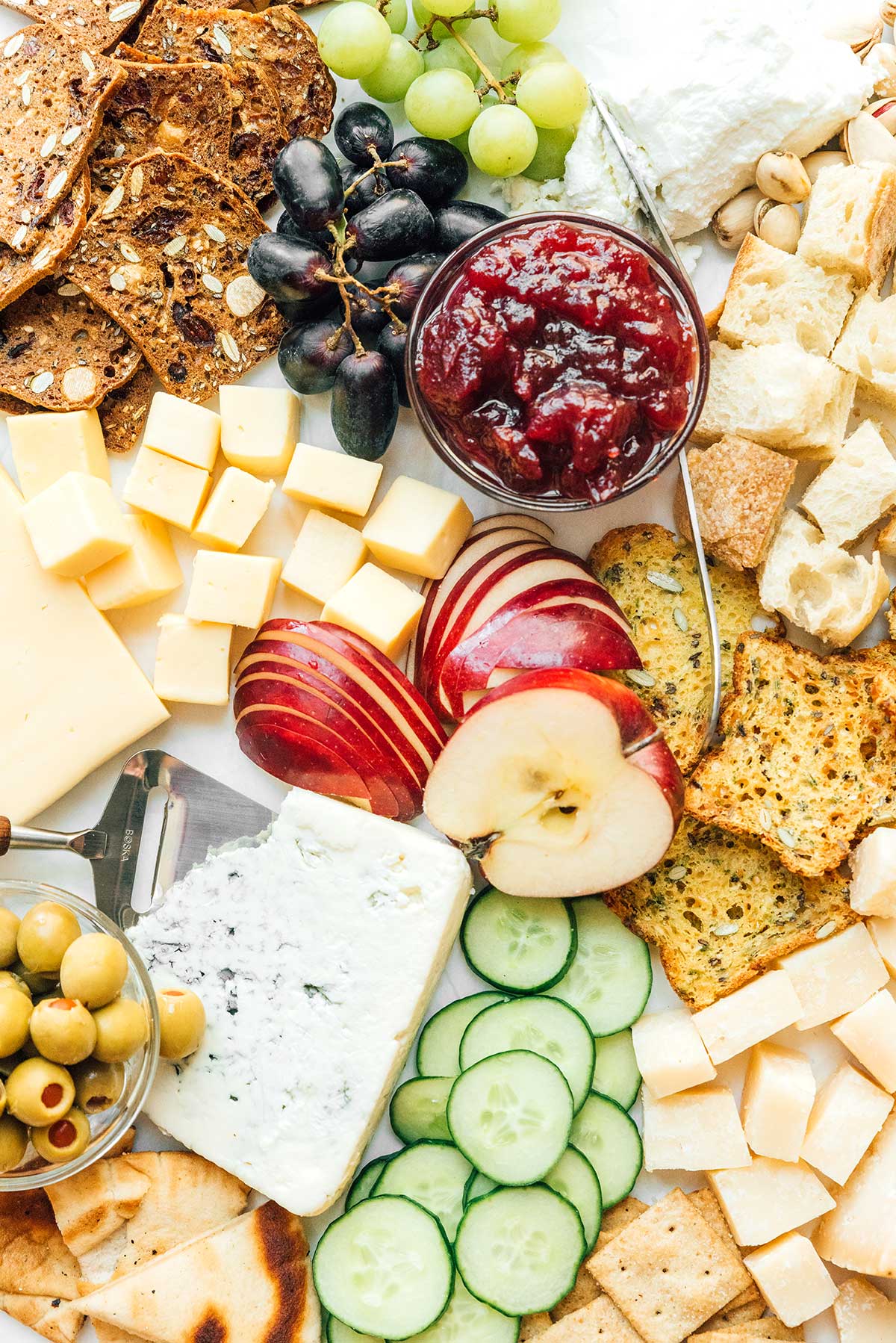
Uses
Blue Cheese: The thing about blue cheese is that people tend to either like it or hate it. If you are in the “like” camp, it is great in making blue cheese or roquefort dressings, crumbled on top of a steak, and of course on a good iceberg lettuce vegetarian wedge salad. Also consider trying any of the blue cheeses with other vegetables like this roasted brussels sprout salad.
In cooking, it can be melted into sauces, used to stuff meats, or crumbled atop steaks and burgers. Some enjoy it on crackers or in sandwiches, and it’s even used as a topping for gourmet pizzas.
Gorgonzola Cheese: Gorgonzola is as versatile as other blue cheese varieties. It is a popular choice for cheese boards and salads, where its creamy or crumbly texture and bold flavor enhance the overall taste. Gorgonzola also pairs well with fruits like pears and figs, as well as nuts and honey. In Italian cuisine, it is used in pasta dishes, risottos, and as a pizza topping. Use Gorgonzola as a pizza topping along with ingredients like caramelized onions, pears, or prosciutto for a gourmet twist. Gorgonzola can even be melted into sauces for a rich and indulgent flavor.
Best Blue Cheese Food Pairings
We are going to treat blue cheese pairings and gorgonzola pairings together though that risks being overly simplistic as the range or tastes among blue cheeses is quite wide to cheese enthusiasts. This said, favorite pairings for each blue cheese are as individual as the cheeses themselves, so experiment.
- Fresh Fruits: Pears are a great pair with blue cheese varieties. The sweetness of the fruit balances the cheese’s saltiness. Our second choice would be either figs or apple slices. The tangy flavor of granny smith apples pairs nicely with these cheeses. Grapes, either red or green, also provide a sweet and juicy contrast to the sharpness of gorgonzola and the other blue cheeses.
- Nuts: Try walnuts. The earthy, slightly bitter flavor of walnuts pairs wonderfully with gorgonzola, creating a delightful contrast in both texture and taste. If walnuts aren’t your taste, pecans are also a good option.
- Honey: Drizzle honey over gorgonzola to add a touch of sweetness that balances the cheese’s pungent flavors.
- Bread and Crackers: Baguette slices, rustic bread, or sturdy crackers make excellent vehicles for enjoying blue cheese. The crunchy texture complements the creamy cheese.
- Balsamic Reduction: A drizzle of balsamic reduction adds a sweet and tangy note that pairs beautifully with blue cheese.
- Vegetables: Roasted or caramelized onions, asparagus, or mushrooms can be a delicious accompaniment, adding depth and earthiness to the cheese. Don’t be limited though. Roast your favorite vegetables in the air fryer and put them on your charcuterie tray with your preferred variety of blue cheese.
Best Blue Cheese Drink Pairings
Wine: Blue cheese pairs beautifully with wine. Consider serving it with a robust red wine like Cabernet Sauvignon or a sweet dessert wine like Port. Alternatively, a glass of crisp white wine, such as Sauvignon Blanc or Riesling, can provide a nice contrast.
Beer: Blue cheese also complements beer. Try it with a strong, malty beer like a Belgian dubbel, a stout, or porter. The flavor or a strong dark beer can stand up to the cheese’s intensity.
Whiskey: For those who enjoy spirits, a quality whiskey, especially a Scotch or a bourbon with caramel notes, can be a fantastic partner for blue cheese.
Substitutes for Gorgonzola
As a blue cheese itself, the best gorgonzola substitute is another blue cheese. Which variety depends upon your taste. Here are a few of our favorite gorgonzola substitutes:
- Roquefort Cheese: Roquefort is a French blue cheese that is somewhat similar in taste to gorgonzola. It has a stronger tangy flavor and a creamy texture.
- Stilton Cheese: Stilton cheese, from England, is another blue cheese that can be used as a gorgonzola substitute. It has a rich and creamy texture with a milder blue cheese flavor.
- Danish Blue Cheese: Danish blue is a bit milder than gorgonzola but still has the characteristic tanginess and creaminess of blue cheese. It’s a good choice if you prefer a less intense flavor. It is also a good cheese for people who don’t “like blue cheese”.
- Cambozola Cheese: Cambozola is a creamy blue cheese that combines the characteristics of camembert and gorgonzola. It has a mild blue cheese flavor and a soft, creamy texture.
- Bleu d’Auvergne Cheese: This French blue cheese has a creamy texture and a pungent, earthy flavor, making it a suitable substitute for gorgonzola in many recipes.
- Cream Cheese and Blue Cheese Blend: If you want a milder option, you can mix cream cheese with a smaller amount of crumbled blue cheese to achieve a creamy texture with a hint of blue cheese flavor.
- Goat Cheese: Fresh goat cheese, also known as chevre, can provide a creamy texture and tangy flavor, although it lacks the blue cheese mold characteristic of Gorgonzola.
If none of these pique your interest, give any of the many other Types of Cheese a try. There is a whole world of choices to pick from.
This wraps up our look at blue cheese vs gorgonzola. Since gorgonzola is a variety of blue cheese the difference between gorgonzola cheese and other blue cheese is arguably less than the similarities. They are all great, and which you prefer is just a matter of preference and what you are going to pair it with or cook with it!
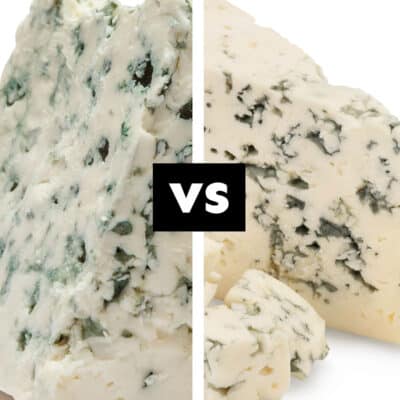
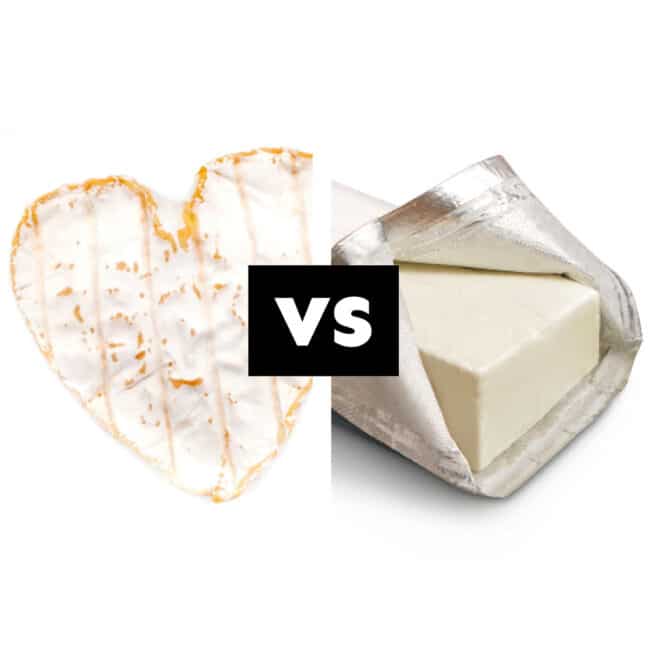
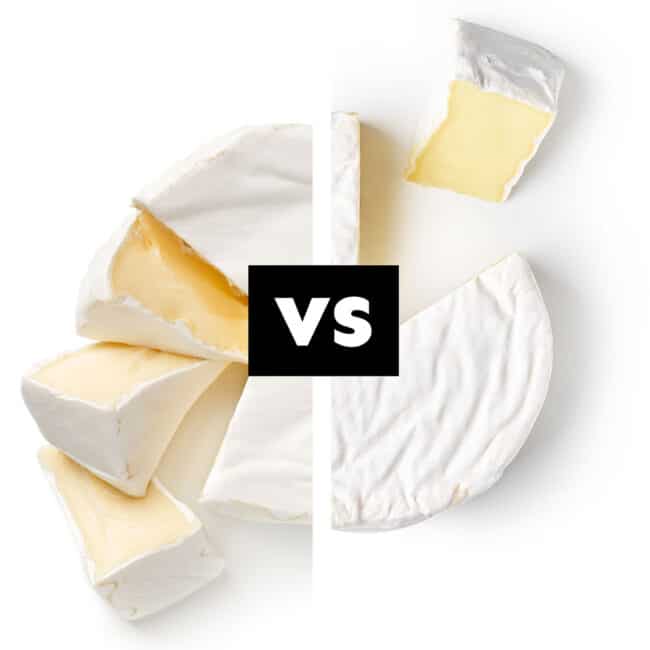
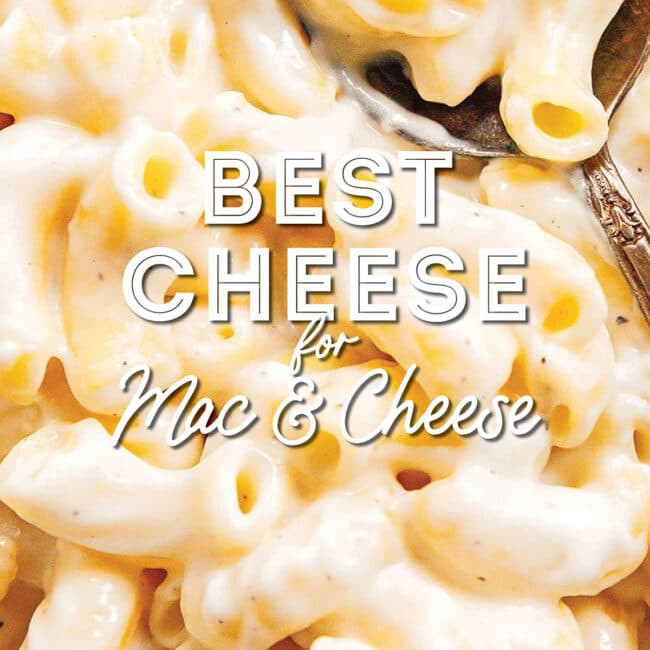
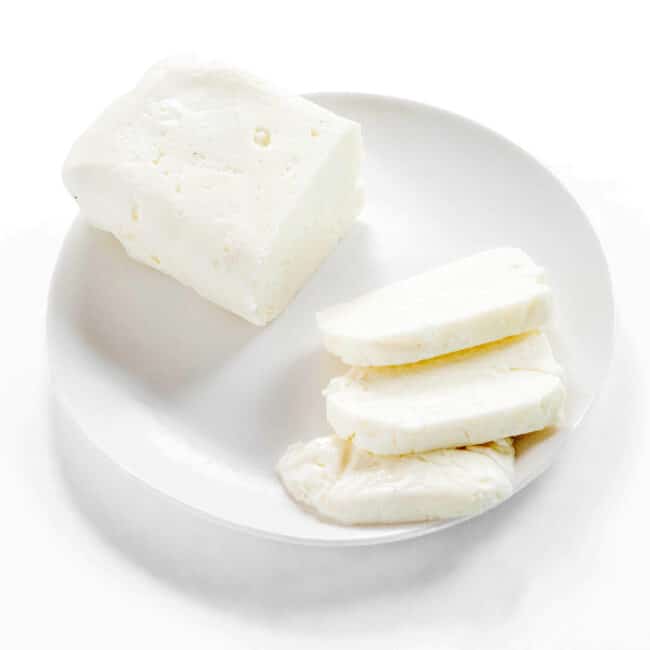
Leave a Comment